New Energy Vehicles Market is expected to grow further at
Isle of Man, Nov. 02, 2022 (GLOBE NEWSWIRE) -- New Energy Vehicles Market by 2022-2030 | Demand, Trends, Opportunities, Challenges, Risks Factors Analysis, Competitive Situation | Key Players, Types, Applications, Regional Analysis

Douglas Insights is the first-ever comparison engine that provides accurate and comprehensive market research reports. It has now included New Energy Vehicles Market research reports in its comparison to enable market researchers, market analysts, industry specialists, and firms to identify and assess past, current, and projected market trends, key drivers of market growth, hindrances to market growth, limitations, challenges, and predictions. This unique digital tool provides access to the most comprehensive range of private and public market reports. Researchers can compare these reports by Prices, Publisher Ratings, List of Contents, Publication Dates, and Prices.
The new energy vehicles market has experienced robust growth in the past few years and is expected to grow further at a CAGR of 21.7% between 2022 and 2030.
Unlike conventional vehicles, energy vehicles are primarily electric cars that require electricity to run. These vehicles don't use diesel or gasoline and are powered by large batteries or fuel cells. Since they don't require fuel to run, it helps users save a lot of money on fuel costs, especially with the rising fuel costs worldwide, which is one of the significant factors contributing to the growth of the energy vehicles market.
Compare the report and make your decision -
Moreover, customers are becoming increasingly aware of environmental pollution and are taking active steps to reduce their carbon footprint. Since electric vehicles are environmentally-friendly and don't emit pollutants, they are preferred by environmentally conscious consumers. Another plus point of these vehicles is that they require lower maintenance and have an efficient electric motor, thus, further reducing car maintenance costs.
Governments worldwide are supporting the production of these zero-emission vehicles by providing electric vehicle car manufacturers with subsidies and tax rebates, further fuelling the growth of the new energy vehicle market by compelling manufacturers to sell these vehicles worldwide. Moreover, governments have set up emission reduction targets depending on their capacity and are taking active steps toward achieving these goals.
In addition, governments are increasingly investing in developing energy vehicle charging stations and hydrogen fuelling stations, creating opportunities for car manufacturers to expand globally and increase their revenue streams.
Moreover, owing to technological advancements in this sector, the cost of energy vehicle batteries is decreasing, leading to mass-scale production. Since batteries are the most expensive component of energy vehicles, reducing their cost encourages manufacturers to increase production.
Apart from a decrease in manufacturing costs of batteries, another significant factor encouraging production is the reduction in cathode material prices. Thus, the prices of these batteries are expected to fall further, resulting in it becoming even cheaper to produce energy vehicles than conventional ones. This significant drop in production cost will likely create growth opportunities in the global energy vehicle market.
However, there is fewer electric vehicle charging stations worldwide compared to conventional charging stations, which reduces the adoption rate of new energy vehicles. Hence, this is one of the primary factors hindering the growth of the new energy vehicles market.
Furthermore, a variation in charging loads of electric vehicles is leading to the standardization of energy vehicle charging stations. Thus, these vehicles are compatible with only a few types of voltages, a significant challenge in this market.
Prominent market players operating in the energy vehicle market include Tesla, Volkswagen, BYD, SAIC Motors, Nissan, Toyota Motor Corporation, Honda Motor Company Ltd, General Motors Group, Hyundai, and KIA Automotive Group. These energy vehicle companies are offering innovative and extensive solutions for the automotive industry to reduce environmental pollution and increase the efficiency of vehicles. Moreover, they also have a wide geographical spread created through extensive distribution networks.
Set a budget for a custom project and see offers from publishers all over the world-
New Energy Vehicles Market Report Coverage
Report Attributes Details Market Size in 2021 $XX Mn Market Size Projection in 2028 $XX Mn CAGR (2021-2028) 21.7% Largest Market North America Growth Drivers Developing energy vehicle charging stations and hydrogen fuelling stations, Creating opportunities for car manufacturers and many more. Segmentation By Vehicle (Passengers Cars, Commercial Vehicle) By Type (Battery Electric, Hybrid, Plug in Hybrid Electric) Regional Analysis North America (US, Canada), Latin America (Brazil, Mexico, Argentina, Rest of Latin America), Europe (U.K, Germany, Italy, France, Spain, Russia and Rest of Europe), APAC (China, Japan, India, South Korea, Australia, ASEAN and Rest of Asia Pacific), ME (GCC Countries, Israel, and Rest of Middle East) & Africa (South Africa, North Africa and Central Africa) Key Companies Covered Jac Motors, Tesla INC, BYD, Uber Technologies, Anhui Jinghui Automobile co Ltd, Daimler AG, Bejiing Automotive industry, Lyft INC, Baidu, Amazon
Segmentations
By Vehicle:
Passengers Cars
Commercial Vehicle
By Type:
Battery Electric
Hybrid
Plug in Hybrid Electric
Key questions answered in this report
COVID 19 impact analysis on global New Energy Vehicles industry.
What are the current market trends and dynamics in the New Energy Vehicles market and valuable opportunities for emerging players?
What is driving New Energy Vehicles market?
What are the key challenges to market growth?
Which segment accounts for the fastest CAGR during the forecast period?
Which product type segment holds a larger mark et share and why?
Are low and middle-income economies investing in the New Energy Vehicles market?
Key growth pockets on the basis of regions, types, applications, and end-users
What is the market trend and dynamics in emerging markets such as Asia Pacific, Latin America, and Middle East & Africa?
Unique data points of this report
Statistics on New Energy Vehicles and spending worldwide
Recent trends across different regions in terms of adoption of New Energy Vehicles across industries
Notable developments going on in the industry
Attractive investment proposition for segments as well as geography
Comparative scenario for all the segments for years 2018 (actual) and 2028 (forecast)
Table of content:
Chapter 1. Executive Summary
1.1. Market Snapshot
1.2. Global & Segmental Market Estimates & Forecasts, 2022-2030 (USD Billion)
1.2.1. Global New Energy Vehicle (NEV) Market, by Region, 2022-2030 (USD Billion)
1.2.2. Global New Energy Vehicle (NEV) Market, by Vehicle, 2022-2030 (USD Billion)
1.2.3. Global New Energy Vehicle (NEV) Market, by Type, 2022-2030 (USD Billion)
1.3. Key Trends
1.4. Estimation Methodology
1.5. Research Assumption
Chapter 2. Global New Energy Vehicle (NEV) Market Definition and Scope
2.1. Objective of the Study
2.2. Market Definition & Scope
2.2.1. Scope of the Study
2.2.2. Industry Evolution
2.3. Years Considered for the Study
2.4. Currency Conversion Rates
Chapter 3. Global New Energy Vehicle (NEV) Market Dynamics
3.1. New Energy Vehicle (NEV) Market Impact Analysis (2022-2030)
3.1.1. Market Drivers
3.1.1.1. Growing Adoption of AI and 5G technology
3.1.1.2. Rising government initiatives and investment in AID Market
3.1.2. Market Challenges
3.1.2.1. Lack of Uninterrupted internal connectivity
3.1.3. Market Opportunities
3.1.3.1. Environmental regulations in developed and developing countries
Chapter 4. Global New Energy Vehicle (NEV) Market Industry Analysis
4.1. Porter’s 5 Force Model
4.1.1. Bargaining Power of Suppliers
4.1.2. Bargaining Power of Buyers
4.1.3. Threat of New Entrants
4.1.4. Threat of Substitutes
4.1.5. Competitive Rivalry
4.1.6. Futuristic Approach to Porter’s 5 Force Model
4.2. PEST Analysis
4.2.1. Political
4.2.2. Economical
4.2.3. Social
4.2.4. Technological
4.3. Investment Adoption Model
4.4. Analyst Recommendation & Conclusion
4.5. Top investment opportunity
4.6. Top winning strategies
Chapter 5. Risk Assessment: COVID-19 Impact
5.1.1. Assessment of the overall impact of COVID-19 on the industry
5.1.2. Pre COVID-19 and post COVID-19 market scenario
Chapter 6. Global New Energy Vehicle (NEV) Market, by Vehicle
6.1. Market Snapshot
6.2. Global New Energy Vehicle (NEV) Market by Vehicle, Performance - Potential Analysis
6.3. Global New Energy Vehicle (NEV) Market Estimates & Forecasts by Vehicle (USD Billion)
6.4. New Energy Vehicle (NEV) Market, Sub Segment Analysis
6.4.1. Passengers Cars
6.4.2. Commercial Vehicle
Chapter 7. Global New Energy Vehicle (NEV) Market, by Type
7.1. Market Snapshot
7.2. Global New Energy Vehicle (NEV) Market by Type, Performance - Potential Analysis
7.3. Global New Energy Vehicle (NEV) Market Estimates & Forecasts by Type (USD Billion)
7.4. New Energy Vehicle (NEV) Market, Sub Segment Analysis
7.4.1. Battery Electric
7.4.2. Hybrid
7.4.3. Plug in Hybrid Electric
.................. continued
Compare the report and make your decision
Inquire Before Buying This Research Report:
Follow Douglas Insights For More Industry Updates- @ LinkedIn & Twitter
About Douglas Insights-
Douglas Insights UK limited is the first company to provide comparison of market research reports by Table of content, price, ratings and number of pages. We understand the value of time. Productivity and efficiency are possible when you take prompt and assured decisions. With our advanced algorithm, filters, and comparison engine, you can compare your preferred reports simultaneously, based on publisher rating, published date, price, and list of tables. Our data portal enables you to find and review the reports from several publishers. You can evaluate numerous reports on the same screen and select the sample for your best match.
Similar Market Research Report Comparisons:
New Energy Vehicle (NEV) Taxi Market: The number of vehicles including taxi fleets in China has grown considerably in recent years, which has resulted in increased air pollution, traffic congestion, and fuel consumption.
New Energy Vehicle Wiring Harness Market: The New Energy Vehicle Wiring Harness market size, estimations, and forecasts are provided in terms of output/shipments (K Units) and revenue ($ millions), considering 2021 as the base year, with history and forecast data for the period from 2017 to 2028.
Low Speed New Energy Vehicle Market: The research report includes specific segments by region (country), by manufacturers, by Type and by Application.
New Energy Vehicle Self dimming Mirror Market: The research report includes specific segments by region (country), by manufacturers, by Type and by Application. Each type provides information about the production during the forecast period of 2017 to 2028.
Electric Vehicle Market Share, Size, Trends
[324 Pages Report] The global electric vehicle market size is projected to grow from 8,151 thousand units in 2022 to 39,208 thousand units by 2030, at a CAGR of 21.7% (2022-2030).
Factors such as growing demand for low emission commuting and governments supporting long range, zero emission vehicles through subsidies & tax rebates have compelled the manufacturers to provide electric vehicles around the world. This has led to a growing demand for electric vehicles in the market. Countries around the world have set up targets for emission reductions according to their own capacity.
Increasing investments by governments across the globe to develop EV charging stations and Hydrogen fueling stations along with incentives offered to buyers will create opportunities for OEMs to expand their revenue stream and geographical presence. The EV sector across Asia Pacific is projected to experience steady growth owing to the high demand for lower cost efficient and low-emission vehicles, while the North American and European market are fast growing markets due to the government initiatives and growing high-performance Passenger vehicle segment. However, relatively less number of EV charging stations and hydrogen fuel stations, higher costs involved in initial investments, and performance constraints could hamper the growth of global electric vehicle market.
To know about the assumptions considered for the study, Request for Free Sample Report
COVID-19 Impact on the Electric Vehicle Market:
There was a moderate impact on the EV charging business due to the pandemic in early 2020 due to lockdowns. Due to the growing demand for EV market during the pandemic due to incentives from governments worldwide, the demand for EV charging stations increased in 2021. However, the outbreak of the COVID-19 pandemic had affected the extraction of materials such as steel, copper, and aluminum. The prices of raw materials such as copper continued to rise, with the copper price hitting USD 10,000 per ton for the first time in 10 years, in May 2021. On the other hand, top EV manufacturers have increased their EV sales rapidly over the past 2 years. Tesla for instance laid off employees in October 2020 due to deteriorating sales. However, its overall revenue increased due to its earlier expansion to China. In 2021, the company fared well and did not have much impact due to COVID-19. In early 2022, its sales again declined due to lockdowns in China. With the strong push from governments around the world to phase out ICE vehicles, this EV market was less impacted during the pandemic.
Dynamics for Electric Vehicle Market / EV Market:
Driver: Reducing cost of EV batteries to support demand for cost-effective EVs
EV Market: The cost of EV batteries has been decreasing during the past decade due to technological advancements and the production of EV batteries on a mass scale in large volumes. This has led to a decrease in the cost of electric vehicles as EV batteries are one of the most expensive components of the vehicle. In 2010, the price of an EV battery was approximately USD 1,100 per kWh. However, by 2020, the price fell to approximately USD 137 per kWh, and it reached as low as USD 120 per kWh in 2021. The price of these batteries are as low as USD 100 per kWh in China’s electric vehicle industry. This is because of the reducing manufacturing costs of these batteries, reduced cathode material prices, higher production, etc. The prices of EV batteries are expected to fall to approximately USD 60 per kWh by 2030, which is expected to significantly reduce the prices of EVs, making them cheaper than conventional ICE vehicles.
Restraint: Insufficient EV charging infrastructure
There are a low number of EV charging stations in various countries around the world. This leads to the lower availability of public EV charging for electric vehicles, thus reducing adoption. Although various countries are in the process of installing EV charging infrastructure, most countries have not been able to install the required number of EV charging stations except in some states. The demand for EVs is expected to increase with a well-developed EV charging network across the world. Most countries are yet to develop such charging networks. The Netherlands has the highest EV charger density per 100 Km. The Netherlands has the highest density of around 19-20 charging stations per 100 km. China is the next best, with around 3-4 charging stations per 100 km. The UK has around 3 charging points per 100 km, but the country is rapidly expanding its charging stations with its 2030 plans to phase out sales of ICE vehicles. Germany, UAE, Japan, Singapore, South Korea, Sweden, France, US, and Russia have also stepped up the shift to EVs by setting up a large number of charging stations.
Electric Vehicle Market Opportunity: Government initiatives pertaining EVs
Countries around the world have set targets to reduce vehicle emissions by 2030-2050. They have started promoting the development and sales of EV market and related charging infrastructure. For instance, the US government invested USD 5 billion in 2017 in electric vehicle industry to promote electric vehicle infrastructure such as charging stations. Several governments are providing various incentives such as low or zero registration fees and exemptions from import taxes, purchase taxes, and road taxes to adopt EVs.
Norway and Germany are investing significantly in promoting sales of EV market. Thus, due to the high incentives and subsidies in Europe, a high growth rate in the sale of electric vehicles is observed. This has led to the growth in demand for components and equipment associated with EV charging, such as charging cables, connectors, adapters, and portable chargers. As part of a partnership between the US energy and transportation departments, a new vision for a national fast-charging network is expected to be developed, with potential longer-term innovations that include up to 350 kW of direct current fast charging. Stringent CO2 emission norms have increased the demand for electric vehicles. Governments are investing significantly in providing incentives and subsidies to encourage the sales of EVs. These steps undertaken by governments around the world are expected to help increase demand for EVs during the coming decade. China, Canada, and US have set up regulations for EVs, while all countries have set up fuel economy standards. They also provide incentives and subsidies for EV manufacturers and buyers. The US provides incentives of up to USD 7,500 for buying new EVs. Most of these countries also provide incentives for the setup of EV charging points. Europe is expected to be the first region with plans to fully shift to EVs. Most countries in the region have announced plans to stop ICE vehicle sales in the coming decades. The UK aims at dominating the entire vehicle market with EV sales by 2030. Norway plans to undertake the same initiative and complete it by 2025. The Netherlands, Israel, Ireland, Iceland, and Denmark have made plans to adopt EVs by 2030. China and Japan also plan to stop ICE vehicle sales by 2035.
Challenge: Insufficient standardization of EV charging infrastructure
Factors such as variation in charging loads have emphasized the need to standardize electric vehicle charging stations. EV charging stations may only be compatible with certain types of voltages. For instance, AC charging stations provide a voltage of 120V AC through level 1 charging stations and 208/240V AC through level 2 charging stations, while DC charging stations provide fast charging through 480V AC. Governments need to standardize charging infrastructure to develop a favorable ecosystem and increase the sales of EVs. Different countries use different standards for fast charging. Japan uses CHAdeMO; Europe, the US, and Korea use CCS; and China uses GB/T. The Indian government had mandated the installation of CHAdeMO and CCS methods since the country has not reached standardization in fast charging methods. Though, this mandate increased the installation cost of charging stations. Hence, in July 2019, the government changed the guidelines and allowed charging station developers to choose their preferred method. The US-based electric car maker Tesla uses high-performance superchargers unique to Tesla and cannot be used for other EVs. The lack of standardization across countries may impact the installation of charging stations and hamper the growth of the electric vehicle charging station market. The use of these different charging standards around the world is a barrier to standardization for EV charging stations. While companies are moving toward the use of a common socket or multiple types of sockets in charging stations, there is still a long way to go in the standardization of all charging points. Standardization of charging points would simplify charging EVs in public and lead to faster growth of EV demand worldwide.
The passenger car segment to be the largest segment during the forecast period
The electric vehicle market for passenger cars is largest in Asia Pacific followed by Europe and North America. In Asia, China, Japan and South Korea are the countries leading the passenger EV market in the region. This is due to the strong government support for passenger EV’s in these countries. Germany, France, Netherlands, Norway, Sweden, UK etc. are the top countries in the European region with a growing demand for EV passenger vehicles. These countries have come out with string emission regulations and a variety of subsidies, grants and incentives for shifting to EV’s. in 2020, due to these measures, Europe’s EV sales went beyond China’s EV sales, but China sold more EVs in 2021 due to the growing demand of mini-EVs. North America is also increasing EV passenger car demand with various states in US and Canada leading the electrifying trend. MEA countries have started to increase their EV market and are expected to be the fastest growing market in the coming years.
Rear wheel Drive EV’s to be the fastest growing in demand during the forecast period
The demand for RWD EV’s has been on the increase across all regions, particularly across Asia Pacific and Europe. This is due to its easier vehicle control and growing demand for these vehicles. North America also has seen a faster growth in these vehicles with Tesla Model 3 Standard version, BMW i3, Volkswagen ID4, Porsche Tycan etc. leading the market. In the coming decade, the growth of RWD EV’s will be highest in MEA due to its newer market and mostly across Asia Pacific. The Wuling Hongguang Mini EV which made a big splash in the EV market in 2020 and 2021 is also a RWD popular across Asia and Europe.
The Asia Pacific market is projected to hold the largest electric vehicle market share
The Asia Pacific electric vehicle market is led by countries like China, Japan and South Korea. China being the world’s largest EV producer and user has a dominance in the global EV market share in the region. Their government has taken steps including subsidies for EV buyers, compulsory laws by which all vehicle manufacturers need to manufacture EV’s per number of vehicles manufactured, large support to installation of EV charging points across major cities and regulations against excessive polluting vehicles. Japan and South Korea have also been growing their EV market. Their governments have supported the EV demand growth by installing EV charging stations, making emission norms, setting up deadlines for shifting to full or hybrid EV’s from ICE vehicles etc. India is also working on increasing its EV demand in the market. The new vehicle scrappage policy in which old vehicles can be scrapped off for changing to low emission ones and other upcoming policy’s will help the country become the regions fastest growing market for EV’s in the coming years. Thailand, Indonesia, Malaysia, and Vietnam have also started working to reduce their vehicle emissions and shift to the use of EVs.
To know about the assumptions considered for the study, download the pdf brochure
Key Market Players
The electric vehicle market is dominated by established players such as Tesla (US), Volkswagen AG (Germany), SAIC Motors (China), BYD (China), and Stellantis (Netherlands). The EV market ranking has been derived by considering EV sales and a certain percentage of segmental revenue for each of the companies mentioned above. These companies also offer extensive products and solutions for the automotive industry. These companies have strong distribution networks at the global level, and they invest heavily in R&D to develop new products.
Get online access to the report on the World's First Market Intelligence Cloud Easy to Download Historical Data & Forecast Numbers
Easy to Download Historical Data & Forecast Numbers Company Analysis Dashboard for high growth potential opportunities
Company Analysis Dashboard for high growth potential opportunities Research Analyst Access for customization & queries
Research Analyst Access for customization & queries Competitor Analysis with Interactive dashboard
Competitor Analysis with Interactive dashboard Latest News, Updates & Trend analysis Request Sample Click on image to enlarge Scope of the Report
Report Attributes Details Market size value in 2022: 8,151 thousand units Projected to reach by 2030: 39,208 thousand units CAGR: 21.7% Base Year Considered: 2021 Forecast Period: 2022-2030 Largest Market: Asia Pacific Region Covered: Asia Pacific, North America, Europe, Middle East & Africa, and South America Segments Covered: Components, Vehicle Type, Vehicle Class, Top Speed, Vehicle Drive Type, EV Charging Point Type, Vehicle Connectivity, End Use, Propulsion and Region Companies Covered: Tesla (US), Volkswagen AG (Germany), SAIC Motors (China), BYD (China), and Stellantis (Netherlands). A total of 35 major company profiles covered and provided
This research report categorizes the electric vehicle market based on Components, Vehicle Type, Vehicle Class, Top Speed, Vehicle Drive Type, EV Charging Point Type, Vehicle Connectivity, End Use, Propulsion and Region.
EV Market, Based on Components:
Battery Cells & Packs
On-Board Charge
Motor
Reducer
Fuel Stack
Power Control Unit
Battery Management System
Fuel Processor
Power Conditioner
Air Compressor
Humidifier
EV Market, Based on Vehicle Type:
Passenger Cars
Commercial Vehicles
EV Market, Based on Vehicle Class:
Low-priced
Mid-priced
Luxury
EV Market, Based on Top Speed:
<125 MPH
>125 MPH
EV Market, Based on Vehicle Drive Type:
Front Wheel Drive
Rear Wheel Drive
All Wheel Drive
EV Market, Based on EV Charging Point Type:
Normal Charging
Super Charging
EV Market, Based on Vehicle Connectivity:
V2B or V2H
V2G
V2V
V2X
EV Market, Based on Propulsion
BEV
PHEV
FCEV
EV Market, Based on End Use
Private
Commercial Fleets
EV Market, Based on the Region:
Asia Pacific China India Japan South Korea Thailand Indonesia Malaysia Vietnam
North America US Canada
Europe France Germany UK Netherlands Switzerland Austria Norway Spain Denmark Sweden
Recent Developments
In February 2022, MG Motors showcased its upcoming EV, the MG 4, which is expected to launch in India later in 2022. The EV will come with a 61.1 kWh battery pack and is expected to run around 400 km.
In January 2022, Volkswagen announced the development of its ID.5 model based on the Skoda Enayaq iV model. The vehicle is expected to have a range of around 300 miles on 1 charge.
In December 2021, BYD launched its new second-generation e6 EV for the Indian market. The deliveries for this model were started by February 2022. This MPV comes with a 71.7 kWh battery pack and a range of around 250+ miles per charge.
In November 2021, BMW launched its new i4 electric sedan with a range of approximately 300-367 miles. The vehicle can reach 100 km/hour in just four seconds. It comes with automatic transmission and connected vehicle features.
In June 2021, Opel/Vauxhall, a subsidiary of Stellantis, launched its Mokka EV, which comes with a max range of 209 miles and a 50kWh battery. The car is FWD and comes with connected vehicle features.
In April 2021, BYD launched four new electric vehicle models equipped with Blade battery in Chongqing. The new vehicle models, Tang EV, Qin Plus EV, Song Plus EV and E2 2021 come with advanced battery safety features.
In April 2021, Volkswagen unveiled the 7 seater EV ID.6 Crozz and ID.6 X produced along with FAW and SAIC in China. The vehicles will be sold only in China. It comes in two battery versions, 58 kWh and 77 kWh and come in four powertrain configurations.
In March 2021, Volvo showcased its new C40 Recharge model. The vehicle is designed as a pure electric car and has most features similar to its XC60 model.
In December 2020, Nissan announced 2021 Leaf model in US. The vehicle comes with a choice of battery between 40 kWh and 62 kWh. The mileage ranges between 149 miles and 226 miles per charge.
Frequently Asked Questions (FAQ):
What is the potential volume of electric vehicles by 2030? The electric vehicle sales are expected to reach 39 million units by 2030 How much was Kia's initial investment that led to the development of today’s BEVs, HEVs, and PHEVs? In 2021, Kia Motors announced an investment of USD 25 billion for development of new electric vehicles as well as business diversification worldwide. How much will electric cars cost in 2030? EV battery costs per kWh are expected to drop to USD 50-60/kWh by 2030, thereby reducing the costs of electric cars by around 40-50% as compared to that in 2021. What fully electric cars are on the market? Tesla Model 3, Wuling Hongguang Mini EV, Tesla Model Y, VW ID.4, Li Xiang One, BYD Han EV, BYD Dolphin, Changan EV, VW ID.3, Nissan Leaf are some of the top selling pure electric models worldwide. What is the rate of growth expected for the EV market in the U.S. between 2020 and 2025? The electric vehicle market is expected to grow with a CAGR of 21.7% through 2022 to 2030. Is Electric Vehicle Market Growing? Yes, the Electric Vehicle market is projected to grow from ~8 million units in 2022 to ~39million units by 2030, at a CAGR of ~22% (2022-2030). Who is leading the EV Market? Global automotive players such as BYD, Tesla, Nissan have been leading the EV market from past 2-3 years. What percent of the market is electric vehicles? The global market share of electric vehicles in the global passenger cars sales was more than 8 % in 2021. What is the current size of the global electric vehicle market? The global Electric Vehicle market is estimated to be 8,151 thousand units in 2022 and projected to reach 39,208 thousand units by 2030, at a CAGR of 21.7% Who are the winners in the global electric vehicle market? The electric vehicle market is dominated by established players such as Tesla (US), Volkswagen AG (Germany), SAIC Motors (China), BYD (China), and Stellantis (Netherlands). The market ranking has been derived by considering the EV sales in 2021 and a certain percentage of the segmental revenue for each of the companies mentioned above. These companies also offer extensive products and solutions for the automotive industry. These companies have strong distribution networks at the global level, and they invest heavily in R&D to develop new products. What are the new market trends impacting the growth of the electric vehicle market? EV battery price reductions, connencted cars, battery management system, Smart charging, wireless on the go charging are the key market trends or technologies which will have a major impact on the electric vehicle market in the future. .
To speak to our analyst for a discussion on the above findings, click Speak to Analyst
Why the automotive future is electric
That hum in the distance is the sound of the concept of mobility changing—for the better. While challenges to the electrification of the vehicle parc persist, opportunities worth fighting for also lay ahead. This is particularly evident in cities, where emissions, congestion, and safety constitute major issues today. If the status quo continues, mobility problems will intensify as population and GDP growth drive increased car ownership and vehicle miles traveled. In response, the mobility industry is unleashing a dazzling array of innovations designed for urban roads, such as mobility-as-a-service, advanced traffic management and parking systems, freight-sharing solutions, and new transportation concepts on two or three wheels.
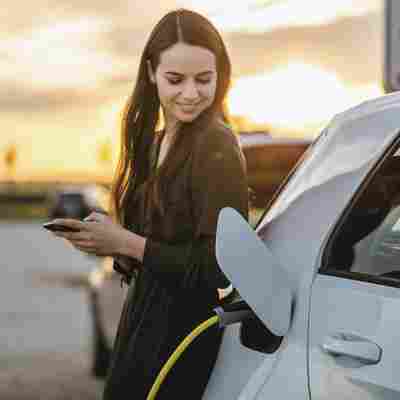
The current opportunity to transform the way we move fundamentally results from changes in three main areas: regulation, consumer behavior, and technology.
Regulation. Governments and cities have introduced regulations and incentives to accelerate the shift to sustainable mobility. Regulators worldwide are defining more stringent emissions targets. The European Union presented its “Fit for 55” program, which seeks to align climate, energy, land use, transport, and taxation policies to reduce net greenhouse gas emissions by at least 55% by 2030, and the Biden administration introduced a 50 percent electric vehicle (EV) target for 2030. Beyond such mandates, most governments are also offering EV subsidies.
Cities are working to reduce private vehicle use and congestion by offering greater support for alternative mobility modes like bicycles. Paris announced it will invest more than $300 million to update its bicycle network and convert 50 kilometers of car lanes into bicycle lanes. Many urban areas are also implementing access regulations for cars. In fact, over 150 cities in Europe have already created access regulations for low emissions and pollution emergencies.
Consumer behavior. Consumer behavior and awareness are changing as more people accept alternative and sustainable mobility modes. Inner city trips with shared bicycles and e-scooters have risen 60 percent year-over-year and the latest McKinsey consumer survey suggests average bicycle use (shared and private) may increase more than 10 percent in the post-pandemic world compared with pre-pandemic levels (See also “The future of micromobility: Ridership and revenue after a crisis,” July 2020). In addition, consumers are becoming more open to shared mobility options. More than 20 percent of Germans surveyed say they already use ride-pooling services (6 percent do so at least once per week), which can help reduce vehicle miles traveled and emissions (See also “Shared mobility: Where it stands, where it’s headed,” August 2021).
Technology. Industry players are accelerating the speed of automotive technology innovation as they develop new concepts of electric, connected, autonomous, and shared mobility. The industry has attracted more than $400 billion in investments over the last decade—with about $100 billion of that coming since the beginning of 2020. All this money targets companies and start-ups working on electrifying mobility, connecting vehicles, and autonomous driving technology (See also “Mobility’s future: An investment reality check,” April 2021). Such technology innovations will help reduce EV costs and make electric shared mobility a real alternative to owning a car.
Electrification will play an important role in the transformation of the mobility industry and presents major opportunities in all vehicle segments, although the pace and extent of change will differ. To ensure the fast, widespread adoption of electric mobility, launching new EVs in the market is an important first step. In addition, the entire mobility ecosystem must work to make the transformation successful, from EV manufacturers and suppliers to financers, dealers, energy providers, and charging station operators—to name only a few (Exhibit 1).
Exhibit 1 We strive to provide individuals with disabilities equal access to our website. If you would like information about this content we will be happy to work with you. Please email us at:
The future of passenger vehicle powertrains is electric; the transformation is ongoing
The tipping point in passenger EV adoption occurred in the second half of 2020, when EV sales and penetration accelerated in major markets despite the economic crisis caused by the COVID-19 pandemic. Europe spearheaded this development, where EV adoption reached 8 percent due to policy mandates such as stricter emissions targets for OEMs and generous subsidies for consumers.
In 2021, the discussions have centered on the end date for internal combustion engine (ICE) vehicle sales. New regulatory targets in the European Union and the United States now aim for an EV share of at least 50 percent by 2030, and several countries have announced accelerated timelines for ICE sales bans in 2030 or 2035. Some OEMs have stated their intentions to stop investing in new ICE platforms and models and many more have already defined a specific date to end ICE vehicle production. Consumer mindsets have also shifted toward sustainable mobility, with more than 45 percent of car customers considering buying an EV.
However, the continued acceleration of electrification is putting significant pressure on OEMs, their supply chains, and the broader EV ecosystem to meet these targets. This is particularly obvious with respect to setting up the required charging infrastructure.
By 2035, the largest automotive markets will go electric
Regulatory pressure and the consumer pull toward EVs vary greatly by region. Europe is mainly a regulation-driven market with high subsidies, while in China consumer pull is very strong despite reduced incentives. In the United States, EV sales have grown slowly due to both limited regulatory pressure and consumer interest, although the regulator trend is set to change under the new administration.
On a global level, we expect EV (BEV, PHEV, and FCEV) adoption to reach 45 percent under currently expected regulatory targets. However, even this transformative EV growth outlook is far below what’s required to achieve net zero emissions. EVs would need to account for 75 percent of passenger car sales globally by 2030, which significantly outpaces the current course and speed of the industry.
We believe Europe—as a regulatory-driven market with positive consumer demand trends—will electrify the fastest and is expected to remain the global leader in electrification in terms of EV market share. In addition to the European Commission target, which requires around 60 percent EV sales by 2030, several countries have already announced an end to ICE sales by 2030. In line with this, seven OEM brands have committed to 100 percent EV sales by 2030 within the European Union. In the most likely accelerated scenario, consumer adoption will exceed regulatory targets and Europe will reach around 75 percent EV market share by 2030. The European Union announced a zero-emissions target for new cars by 2035.
Would you like to learn more about the McKinsey Center for Future Mobility
China will also continue to see strong growth in electrification and remain the largest EV market in absolute terms. Uptake results from strong consumer pull, despite low EV subsidies and no official end date for ICE sales. However, the government’s dual-credit policy has led to an increased EV share in OEMs’ portfolios. Our adoption modeling yields a Chinese EV share above 70 percent for new car sales in 2030 in the accelerated scenario.
In the United States, the Biden administration announced a 50 percent electrification target for 2030, strong investments in charging infrastructure, and more stringent fleet emissions targets. EV uptake will result mainly from regulatory support in California and other states that follow its CARB ZEV regulation. US OEMs support electrification targets and have declared ICE bans by 2035, meaning the United States will follow Europe and China in EV uptake with a small delay; it is expected to exceed current regulatory targets and reach 65 percent EV sales by 2030 in the accelerated scenario (Exhibit 2).
Exhibit 2 We strive to provide individuals with disabilities equal access to our website. If you would like information about this content we will be happy to work with you. Please email us at:
The e-mobility transformation will disrupt more than the automotive industry
In the European Union, achieving the accelerated scenario of around 75 percent EV sales by 2030 will have implications for the entire EV value chain and ecosystem. In parallel, the industry must decarbonize the full lifecycle of vehicles to get closer to a net-zero target.
Incumbent automotive suppliers need to shift production from ICE to EV components. Europe will have to build an estimated 24 new battery giga-factories to supply local passenger EV battery demand. With more than 70 million EVs on the road by 2030, the industry will need to install large numbers of public chargers and provide maintenance operations for them. Renewable electricity production needs to increase by 5 percent to meet EV charging demand. Finally, emissions from BEV production must decline, since BEVs currently have 80 percent higher emissions in production than ICE vehicles (Exhibit 3).
Exhibit 3 We strive to provide individuals with disabilities equal access to our website. If you would like information about this content we will be happy to work with you. Please email us at:
Electrification will cause a major shift in the entire automotive supply chain
The transformation of the automotive industry toward electrification will disrupt the entire supply chain and create a significant shift in market size for automotive components. Critical components for electrification such as batteries and electric drives and for autonomous driving like light detection and ranging (LiDAR) sensors and radar sensors will likely make up about 52 percent of the total market size by 2030. Components only used in ICE vehicles such as conventional transmissions, engines, and fuel injection systems would see a significant decline to around 11 percent by 2030—about half the size of 2019 levels. Such a drastic shift will force traditional component players to adapt quickly to offset decreasing revenue streams.
The scale of disruption will be significant: according to the Institute for Economic Research (Ifo) in Munich, more than 100,000 jobs will change in the German automotive industry by 2030. That is roughly five to ten times the scale of jobs compared with the phaseout of coal power that Germany announced for 2038 (Exhibit 4).
Exhibit 4 We strive to provide individuals with disabilities equal access to our website. If you would like information about this content we will be happy to work with you. Please email us at:
Announced EU battery production will likely stay just ahead of demand
Based on announced buildup plans, we expect a 20-fold increase in battery production capacity in Europe to 965 GWh by 2030. Assuming the full capacity is built by 2030, Europe should meet expected demand of 874 GWh. BEV passenger cars and commercial vehicles will drive 90 percent of this battery demand. While on paper announced capacities seem to follow and match demand, in reality temporary implementation risks will likely occur given giga-factory production issues, typically slow yield ramp-ups, fragmentation of the supply chain, and large inflexible OEM contracts. Thus, in an accelerated EV adoption case, battery demand would come very close to exceeding announced supply in the medium term. In the next ten years, we expect the mining industry to slow down and other geopolitical and supply chain crises to pop up periodically, leading to some short-term price spikes in commodities like nickel and lithium.
Battery cell production is moving physically closer to vehicle assembly plants. While ten years ago almost all cells were imported from Asia, regional production hubs exist today in Eastern Europe, for example. Furthermore, multiple plants will go onstream in key vehicle-producing countries like Germany, the United Kingdom, and France and in low-carbon-emitting environments such as Norway and Sweden.
In addition to incumbent battery cell players from Asia setting up locations in Europe, some entirely new companies are entering the space. One key development in battery sourcing involves the backward integration of OEMs from packs and modules up to cell production—mostly in the form of joint ventures with cell manufacturers. OEM backward integration plans result from their growing battery cell demand, the desire for control and certainty of supply, and the ambition to keep a significant part of vehicle value creation inhouse. OEMs are also seeking areas for differentiation, with battery technology, durability, and performance seen as key evaluation criteria for BEVs.
Production of raw materials and battery components follow the localization trend of battery cell plants. However, there is a time lag and only some of the raw materials needed, which include nickel, cobalt, lithium, and graphite, are available for local sourcing in Europe. Companies must therefore compete globally to secure required volumes and do it sustainably in line with environmental, social and governance (ESG) criteria. While all four commodities must ramp up quickly, with potential price variation in the future, nickel will likely be the commodity under the most pressure in the short to medium term (Exhibit 5).
Exhibit 5 We strive to provide individuals with disabilities equal access to our website. If you would like information about this content we will be happy to work with you. Please email us at:
Acceleration in charging infrastructure buildup needed
In line with EV uptake, the buildup of charging infrastructure needs to accelerate to avoid becoming a potential bottleneck and limiting consumer-driven EV adoption. Building charging infrastructure in sync with the EV fleet will be essential in the coming decade.
While first-generation EV buyers relied mainly on private charging (in 2020, 80 percent of EV buyers in Europe had access to private charging), the next generation will depend on public charging. More than 50 percent of Europeans will be living in multifamily homes without private charger access, and public chargers will ensure practicality of EVs for long-distance trips, which prospective EV buyers still consider a main concern.
Likewise, regulatory processes to install chargers in private homes require simplification and production capacity for wall boxes must increase. Production scale-up and simplified regulation (in terms of shortened permit and building times) are also necessary for public chargers, in addition to the creation of demand-based coverage.
We estimate the industry needs to install more than 15,000 chargers per week by 2030 within the European Union. Simplified regulations are needed to facilitate charger siting, since it can currently take up to three years to obtain approval for grid extensions for a fast-charging station. Ensuring the EU-wide coverage of public charging is essential to avoid having chargers located only in profitable locations.
EVs are poised to command on average more than 5 percent of electricity demand in 2030 in Europe. It will be important to reduce charging during peak load periods through “managed charging” by controlling charging time, duration, and intensity with vehicle-to-grid (V2G) technology as an enabler. In a scenario with appropriately managed charging devices in place as well as incentives to charge during nonpeak hours, much of the customer impact on the electric grid will be mitigated (Exhibit 6).
Exhibit 6 We strive to provide individuals with disabilities equal access to our website. If you would like information about this content we will be happy to work with you. Please email us at:
Reaching net zero also means decarbonizing EV production
There is a clear path to reducing CO 2 equivalent (CO 2 e) emissions from passenger cars in operation. A recent International Council on Clean Transportation (ICCT) analysis stated that the shift from ICE to BEV would reduce total lifecycle CO 2 e emissions by around 65 percent based on the current average energy mix in Europe and by 83 percent with entirely green electricity.
As the electricity supply evolves and charging with green energy for a larger fleet of EVs becomes feasible, materials and production will become the dominant sources of emissions in an EV’s lifecycle. Today an EV’s production generates an almost 80 percent higher emissions intensity compared with an ICE car, due mainly to the battery and the vehicle’s higher share of aluminum.
Mobility’s future: An investment reality check
When aiming to reduce material emissions, two main issues matter:
Increasing recycled content. Replacing virgin/primary materials with recycled alternatives will save a large share of emissions associated with the initial generation of raw materials. Replacing 30 percent of primary material with recycled material can save 15 to 25 percent of production emissions. Recycled material use, however, comes with multiple challenges, including the reality that end-of-life (EOL) collection remains very immature, making it difficult to achieve an automotive-grade materials stream. Furthermore, multiple industries are interested in using recycled material to achieve their decarbonization targets, which will result in supply bottlenecks and the higher prices of several recycled materials.
Shifting to green raw materials. Using primary materials produced in a low/no-carbon process enables high-grade materials with low emissions footprints. Examples of this approach include inert anode aluminum smelting via hydroelectricity or steel produced through hydrogen-based direct reduced iron in an electric arc furnace (H2 DRI-EAF steel). Around 80 to 90 percent of today’s typical material emissions can be eliminated with 2030 technologies. The main approaches involve decarbonizing the raw material refining processes by using renewable electricity, for example, and decarbonizing the forming as well as other high-energy manufacturing processes, also via electrification.
While a switch in electricity resources is simple, the shift from today’s processes to manufacturing routes that avoid CO 2 e emissions altogether—rather than capturing or gradually reducing them—will require significant investments in plants and equipment. A predictable demand for green materials and long-term commitments between suppliers and buyers would help overcome this obstacle in the next decade.
A determined approach to decarbonizing and combining these methods could produce vehicles with 10 to 30 percent of today’s production emissions by 2030—a challenging feat but necessary to fulfill the Green Deal aspiration. Nevertheless, decarbonizing the supply chain and achieving Scope 3 emissions reductions may cause vehicle costs to rise at a time when OEMs are trying to lower prices to boost consumer interest and achieve sustainable long-term margins (Exhibit 7).
Exhibit 7 We strive to provide individuals with disabilities equal access to our website. If you would like information about this content we will be happy to work with you. Please email us at:
A 55 percent transport emissions reduction target by 2030 versus 1990 requires more drastic measures
Current regulation and targets are not sufficient if the road transport sector wants to fully contribute to the 55 percent CO 2 e emissions reduction target by 2030 versus 1990 as required by the Fit for 55 program.
However, passenger cars have one advantage over other industries from a decarbonization point: The zero-emissions option (e.g., the BEV) is cheaper than the current alternative (ICE) from a total cost of ownership perspective in some countries today and by 2025 at the latest in countries without incentives. This is not the case in most other industries, where decarbonizing results in higher costs for both producers and consumers.
Sidebar LinkedIn
Email Our capabilities The McKinsey Center for Future Mobility (MCFM) aims to help all stakeholders in the mobility ecosystem navigate the future by providing independent and integrated evidence about possible future mobility scenarios. Our view of trends are grounded in advanced multi-level driver based models that have been validated across industries and players. Each model is based on proprietary data and contributes to an integrated perspective on future mobility trends and scenarios including modal mix, miles traveled, vehicle sales, autonomy, powertrain electrification, battery demand, charging infrastructure, components, consumer behavior, and value/profit pools, etc. This charticle leveraged insights from multiple MCFM models and the broad MCFM Solution team. Please get in touch if you would like to learn more.
However, with the average car age at ten years in Europe, it will take time for EV sales to have an impact at the parc level. The current regulation on sales is therefore not sufficient to meet the goal of a 55 percent emissions reduction from 1990 levels by 2030.
Closing this gap will require further measures targeting CO 2 e emissions of the vehicle parc. ICE vehicle kilometers traveled could be decreased by reducing private car kilometers, increasing shared mobility, and changing consumer perspectives on walking/biking.
At the same time, the most efficient lever is to accelerate the ICE parc turnover and remove highly polluting ICE vehicles from the fleet with, for example, “cash-for-clunkers” programs for old ICE cars.
Another way to reduce CO 2 e emissions from ICE vehicles is to increase the share of bio- and e-fuels as these have a low carbon footprint and are compatible with the existing ICE parc. However, the majority of bio- and e-fuels supply will be required to decarbonize marine/aviation and commercial road transport, for which only limited zero-emissions alternatives exist today (Exhibit 8).
Exhibit 8 We strive to provide individuals with disabilities equal access to our website. If you would like information about this content we will be happy to work with you. Please email us at:
Electric vehicles are coming, and we are on the right track regarding decarbonizing the transport sector, though more actions need to be taken. It is an industry transformation taking place at unprecedented speed. It is also crossing industry borders, involving energy, infrastructure, mobility, and automotive players. While a major challenge, it represents a huge opportunity for incumbents and new players to take a leading role in creating new multi-billion industries and jobs. The key will be to couple sustainability with economic viability through innovative technology and properly guided mobility transformation. Based on its diverse mobility landscape, its focus on sustainability and its proven technology leadership, Europe could emerge as a role model for other regions globally.


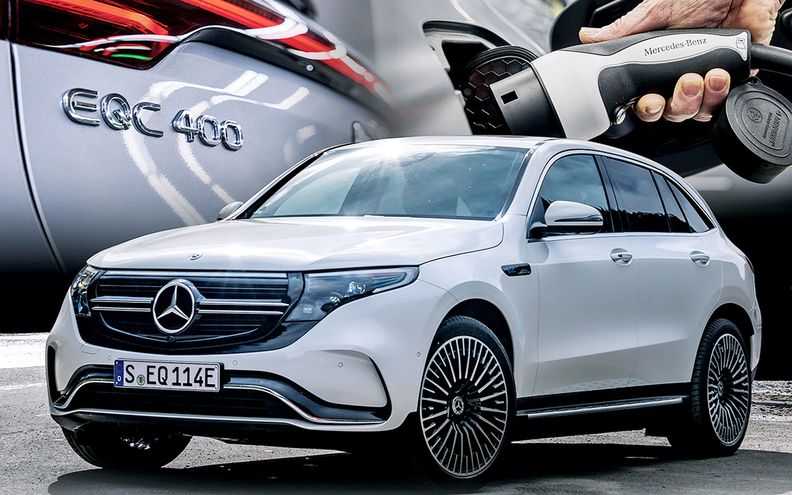
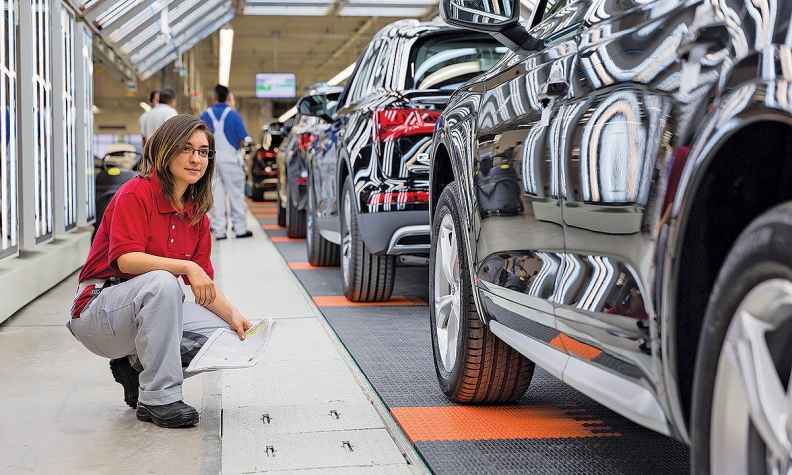

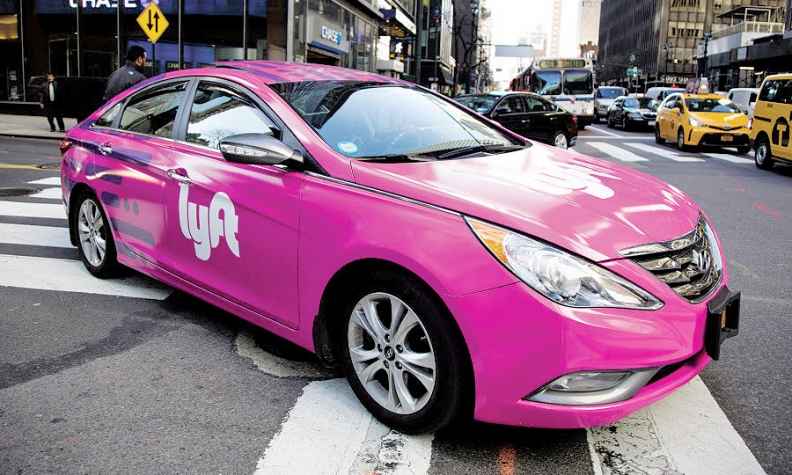
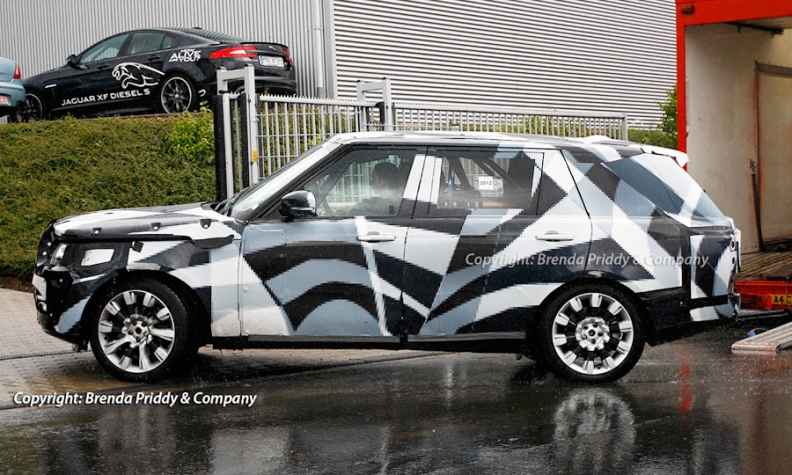
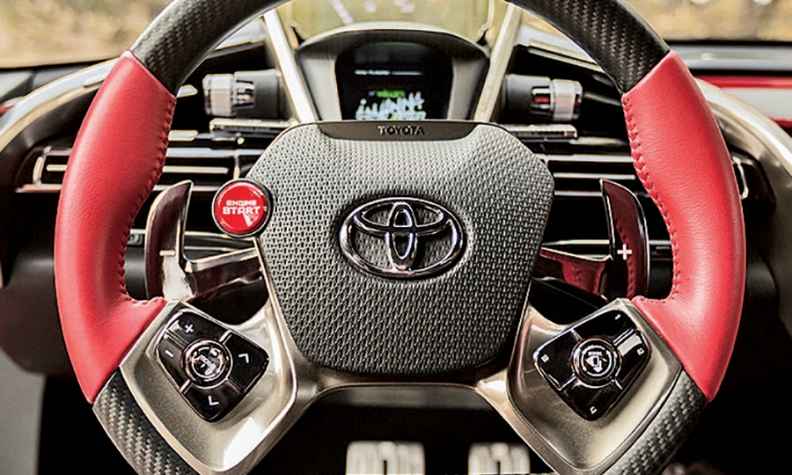
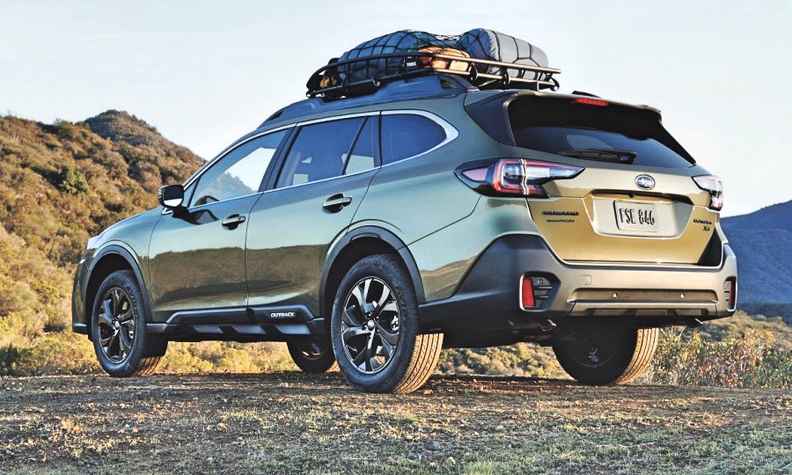
Post your comment